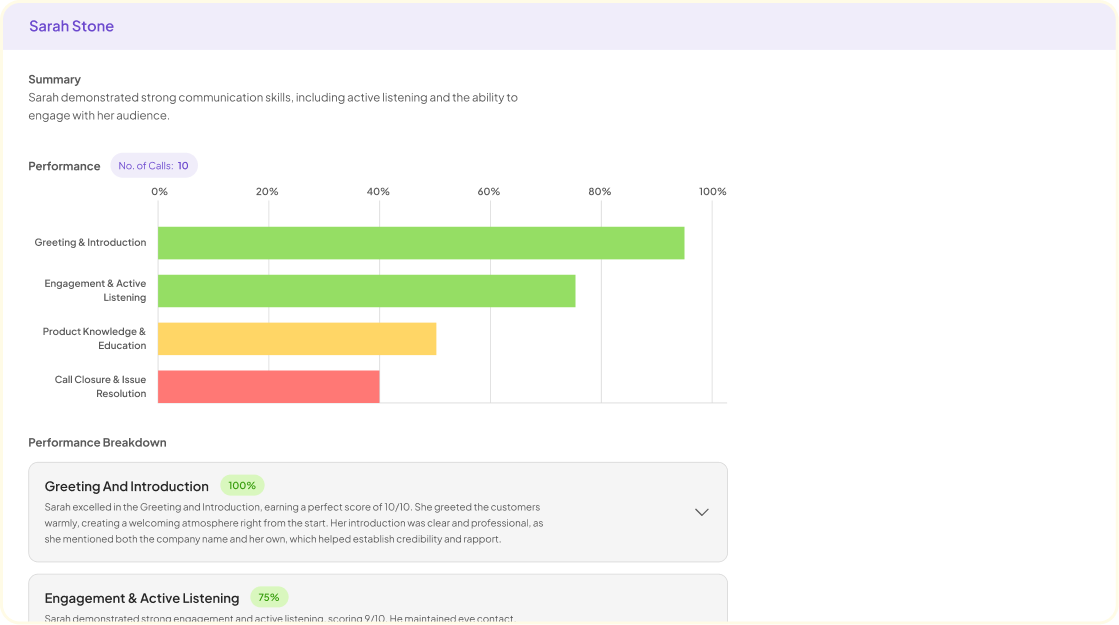Thematic Analysis Tools play a vital role for researchers striving to decode complex qualitative data. As the landscape of research evolves, the need for robust analytic tools has never been more critical. By utilizing these tools, researchers can uncover patterns, themes, and insights that might otherwise go unnoticed, enriching their understanding of the data.
In this guide, we will explore seven essential thematic analysis tools designed to enhance your research process. Each tool offers unique features tailored to various research needs, enabling you to interpret and analyze your findings effectively. Understanding these tools will empower you to make informed decisions and improve the quality of your research outcomes.
Top Thematic Analysis Tools for Researchers
Thematic analysis is a widely used qualitative research method that allows researchers to identify, analyze, and report patterns (themes) within data. It is particularly useful in understanding complex data sets, such as interview transcripts, focus group discussions, and open-ended survey responses. In this blog post, we will explore seven thematic analysis tools that can significantly enhance the efficiency and effectiveness of your research process.
1. Insight7
Insight7 is a powerful platform designed to streamline the thematic analysis process for researchers. It allows users to analyze conversational data at scale, making it ideal for qualitative research. Here are some key features of Insight7:
- Automated Transcription: Insight7 provides a built-in transcription service that converts audio and video recordings into text with high accuracy (up to 99%). This feature saves researchers significant time and effort in manual transcription.
- Thematic Analysis: The platform automatically extracts themes from the data, allowing researchers to quickly identify key insights without sifting through lengthy transcripts.
- Multi-Project Analysis: Insight7 enables users to analyze multiple projects simultaneously, making it easy to compare findings across different studies.
- Customizable Reports: Users can generate reports that summarize key findings, insights, and recommendations, making it easier to present results to stakeholders.
- Data Privacy Compliance: Insight7 takes data privacy seriously, ensuring compliance with regulations such as GDPR and SOC2.
To get started with Insight7, you can sign up here for a free trial and experience its capabilities firsthand.
Extract insights from interviews, calls, surveys and reviews for insights in minutes
2. NVivo
NVivo is a popular qualitative data analysis software that allows researchers to organize, analyze, and visualize unstructured data. It is particularly useful for thematic analysis due to its robust coding capabilities. Key features include:
- Data Organization: NVivo allows users to import various data types, including text, audio, video, and images, making it versatile for different research projects.
- Coding and Categorization: Researchers can easily code data segments and categorize them into themes, facilitating a structured analysis process.
- Querying and Visualization: NVivo provides advanced querying tools to explore relationships between themes and visualize data through charts and models.
3. MAXQDA
MAXQDA is another qualitative data analysis tool that supports thematic analysis. It offers a user-friendly interface and a range of features to assist researchers in their analysis:
- Flexible Coding System: MAXQDA allows users to create a flexible coding system, making it easy to adapt to different research needs.
- Mixed Methods Support: The software supports both qualitative and quantitative data analysis, enabling researchers to integrate different data types in their analysis.
- Visual Tools: MAXQDA includes various visualization tools, such as word clouds and charts, to help researchers present their findings effectively.
4. Dedoose
Dedoose is a web-based qualitative data analysis tool that is particularly useful for collaborative research projects. Its features include:
- Cloud-Based Collaboration: Dedoose allows multiple users to work on the same project simultaneously, making it ideal for team-based research.
- Data Integration: Researchers can integrate qualitative and quantitative data, facilitating a comprehensive analysis of their findings.
- User-Friendly Interface: The platform is designed to be intuitive, making it accessible for researchers with varying levels of technical expertise.
5. Atlas.ti
Atlas.ti is a powerful qualitative data analysis software that supports thematic analysis through its advanced coding and visualization features:
- Visual Network Views: Atlas.ti allows researchers to create visual representations of their data, helping to identify connections between themes and insights.
- Flexible Coding Options: Users can apply multiple coding methods, including in vivo coding, to capture the essence of the data.
- Data Management: The software supports various data formats, making it easy to manage and analyze diverse data sets.
6. QDA Miner
QDA Miner is a qualitative data analysis software that offers a range of features for thematic analysis:
- Text Analysis Tools: QDA Miner provides tools for text analysis, including word frequency counts and co-occurrence analysis, to help researchers identify themes.
- Coding and Memoing: Users can code data segments and create memos to capture insights and reflections during the analysis process.
- Export Options: The software allows users to export their findings in various formats, making it easy to share results with stakeholders.
7. Transana
Transana is a qualitative data analysis tool specifically designed for analyzing audio and video data. Its features include:
- Transcription and Analysis: Transana allows users to transcribe audio and video recordings and analyze them simultaneously, streamlining the research process.
- Coding and Tagging: Researchers can code segments of data and tag them with themes, facilitating a structured analysis approach.
- Visualizations: The software provides visual tools to help researchers present their findings effectively.
How to Choose the Right Thematic Analysis Tools
Choosing the right thematic analysis tools involves understanding your specific research needs and the features each tool offers. First, consider the type and volume of data you are working with, as some tools are better suited for qualitative data, while others excel with larger datasets. Think about whether you prefer a user-friendly interface or are comfortable with more complex functionalities.
Next, ensure the tool can support your analysis methods, such as coding and identifying themes. Look for features like visualization capabilities and collaboration options if you work in a team. Testing a few tools can help you appreciate their strengths and weaknesses, allowing for a more informed decision overall. Ultimately, the right thematic analysis tools will not only streamline your workflow but also enhance your research outcomes.
Evaluating Features and Usability
When evaluating features and usability, researchers must focus on how effectively thematic analysis tools serve their purpose. It’s essential to assess the tool’s interface, ensuring that it is intuitive and user-friendly. Furthermore, the available features should align with your research needs, allowing for seamless coding, collaboration, and data visualization.
To facilitate a thorough evaluation, consider the following aspects:
- User Interface: Check if the design is straightforward and accessible for all users. An effective tool must minimize learning curves.
- Coding Options: Examine how the tool supports different coding methods, such as in vivo or descriptive coding. Flexibility here is crucial for thematic development.
- Collaboration Features: Determine whether the tool allows multiple users to collaborate simultaneously, which can enhance team efforts and data integrity.
- Data Visualization: Evaluate the effectiveness of visualization options provided for presenting your analysis results. This can significantly impact data interpretation.
- Support and Resources: Investigate the availability of support, tutorials, and user communities. Strong support can facilitate a better user experience.
By carefully considering these features, researchers can choose thematic analysis tools that enhance their workflow and yield more insightful results.
Considering Cost and Accessibility
When selecting thematic analysis tools, researchers must weigh cost and accessibility to ensure their needs are met effectively. The pricing of these tools can vary significantly, with options ranging from affordable platforms for individual users to more comprehensive solutions for large teams. Understanding your project’s scale and budget can guide your choice, enabling you to select a tool that aligns with your analytical needs without overspending.
Another vital aspect to consider is the accessibility of these tools. User-friendliness and the availability of support resources play a significant role in how effectively researchers can utilize these tools. A more expensive tool that provides excellent support and functionality might ultimately be more cost-effective than a cheaper alternative that is difficult to use. In the end, striking a balance between cost and accessibility ensures that researchers can conduct their thematic analysis efficiently while minimizing barriers to entry.
Conclusion: Leveraging Thematic Analysis Tools for Effective Research
Utilizing thematic analysis tools can significantly enhance the research process for scholars and practitioners alike. These tools not only help organize data but also refine insights into manageable themes. By systematically applying these instruments, researchers can identify patterns, making their findings more robust and actionable. The clarity and structure brought by such tools illuminate various facets of the research, enabling a deeper understanding of complex data.
Furthermore, effective thematic analysis can drive meaningful interpretations that resonate with target audiences. As researchers explore these tools, they discover a wealth of opportunities for improved decision-making and insight generation. Ultimately, embracing these analytical resources empowers researchers to create narratives that are both compelling and analytically sound, ensuring their work contributes effectively to existing knowledge.
Analyze & Evaluate Calls. At Scale.



